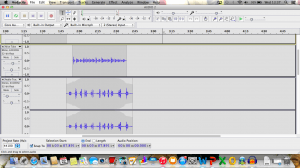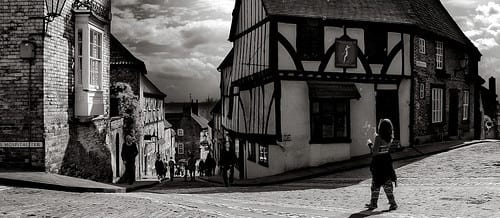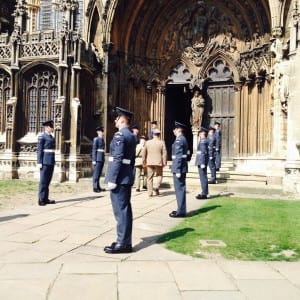Theres been many moments over the last couple of days that have ‘thrown a complete spanner in the works’. I knew that the devising process was always going to be hard, but working with audio make that devising process even more complicated.
Orchestrated serendipity and The Happenings.
As a group we decided that we needed more substance to the performance, not regarding the audio, but external happenings that could influence the audience. We started to research into how to create subtle coincidences around the walk. If an audience member whiteness them it may make them stop and wonder if it was pre planed or just an extreme act of fait. Im personally fascinated by these moments of coincidence that makes you wonder if it was just random, or wether fait has brought you to it for a reason. We wanted to plant these moment within the performance and create moments of ‘orchestrated serendipity’, allowing the spoken meaning within the audio to occasionally reflected the ‘outside world’. Rachel Happe’s definition of the term orchestrated serendipity is clear and helped us considerably to understand what we would do to create such impacting moments. She stated that ‘you or an entire organization can create an environment where serendipity and luck are likely to occur, where you will notice it, and where you can effectively take advantage of it’ (Happe, 2008). This then led us to look into Prototype theatre company’s project Fortnight. They held two week long pervasive media performances in cities such as Nottingham and Lancaster where they would create ‘complex geographies of encounters – some which feel strange, some which feel theatrical, some which feel immensely personal’ (Allison, 2011,18). Allan Kaprow’s Happenings were also something that inlufenced our thought process regarding coincidence. He commented on his work stating that ‘the line between The Happening and daily life should be kept as fluid and perhaps instinct as possible’ (Kaprow, 1993, 62). This fluidity is something we want to include as we don’t want the moments to be too obvious so they are still questionable.
Creating the audio.
Over the last week we created a trial run of the audio in order to test it out and find any flaws in the timings etc. We recording Fleur’s voice for each audio track and then I took them home and edited them on Audacity. I added some sound, adjusted the timing of the pauses, edited the background noise and added in the external voice recordings. Below is an example of our first trial run at the audio:
We decided that rather than it being half an hour or more with just a single voice, sound effects and music would enhance the audio. We added the sound effect of children playing, wedding bells, marching, and musical instrumental to accompany the final speech. We looked into new audio recording performances and back over the Everyday Moments podcasts. Josie Long’s everyday moment podcast (Long, 2011) was to be listened to whist shopping in a supermarket. In the background there were sounds of tills beeping, the hustle and bustle of people shopping. This use of sound effects was really effective at portraying where the listener should be, so we tried out our recordings with subtle sound effects that correlated to the specific age we were representing. Michael Pinchbeck’s project Sit With Me For A While And Remember used slow hypnotic music to enhance the spoken words, and personally it made me engage with the topic of conversation more. I found this really interesting and so inserted a music track under the final speech:
Our intention was to hammer home the idea of inevitability of death (as depressing as that sounds) and we believed the music really enhanced the words of the speech.
Trial run through of performance.
On Tuesday 21st April we invited Rachel to become an audience member and take part in a trial run of our performance. We decided to go an hour prior to Rachel’s visit to trial it out for ourselves. As we arrived the cathedral grounds were packed with priests, solders, and local families for the revealing of the commemorative memorial for the 1945 food drop in Holland. Many of our sites were occupied by the ceremony such as the judgment gates, the pathway to site 2 and to site 3, and the green we start on. This forced us to change the route and meant Rachael couldn’t experience it fully.
However on our trail run we noticed that most of the timings of the pauses were off (especially audio 2), and it made the whole thing quite overwhelmingly confusing. We decided then that we would need to limit the amount of description we give for instructions as we can’t predict where the audience will be when we say ‘to your left and you’ll see a lamppost’. When I followed the instructions, I hadn’t even made it round the corner and the lamppost wasn’t even in sight.
After Rachel complete the trail run, she gave us feedback on how and what to improve. The overall concept seemed to be solid enough, however the way we had phrased the audio and the tone of voice that was used came across patronising, which was far from our intention! Over the next few days we will re-recording the audio as a companion accompanying them on the journey, changing the tone of voice, and suggesting instructions rather than abruptly telling them what to do.
Happe, R. (2009) 5 Ways to Orchestrate Serendipity. [blog entry] 8 December. Available from http://www.thesocialorganization.com/2009/12/5-ways-to-orchestrate-serendipity.html [Accessed 20 April 2015].
Hui, Allison. (2011) Art as an everyday intervention: shifting times, places and mobilities in the pervasive media performance project “Fortnight”. Hong Kong: Hong Kong Baptist University.
Kaprow, A. (1993) Essays on the Blurring of Art and Life. California: University of California Press.
Long, J. (2011) Everyday Moments 8: audio drama for private performance. [podcast] 23 August. Available from http://www.theguardian.com/culture/audio/2011/aug/23/theatre-josie-long [Accessed 20 April 2015].

